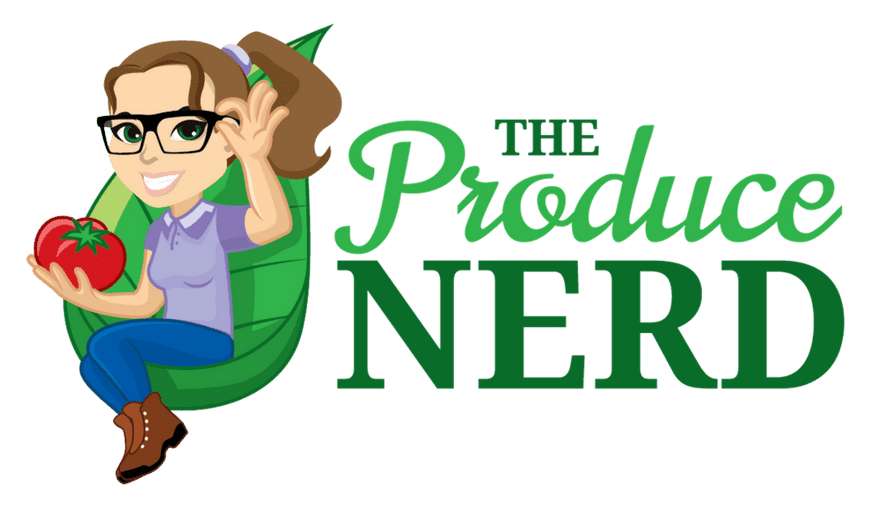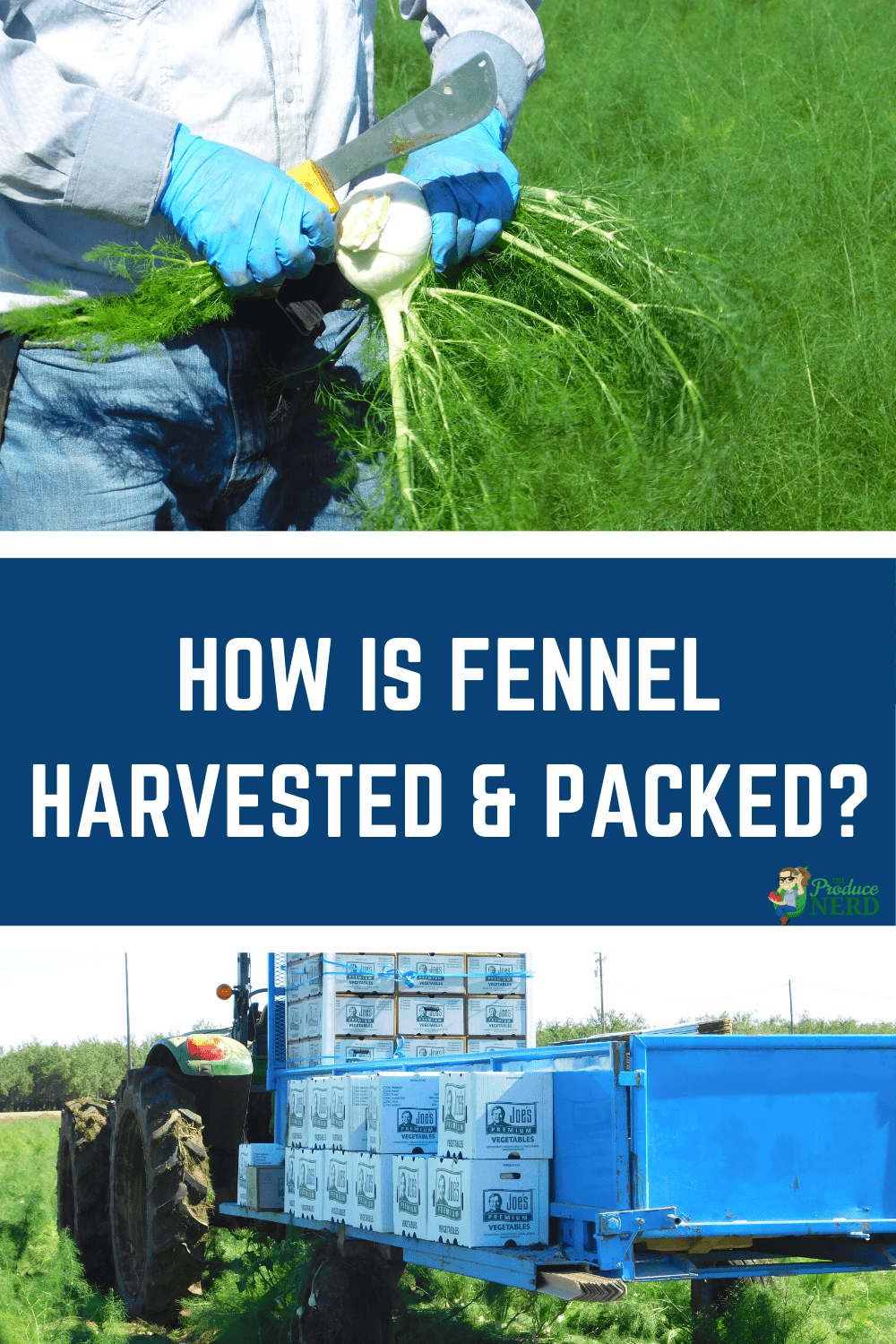Fennel, also known as Sweet Anise, is a very distinct root vegetable, based on its appearance, as well as its smell! I was lucky enough to get to visit one of J. Marchini Farms‘ fennel harvesting and packing operations in Merced, California, and am sharing it with you below.
Table of Contents
Fennel Plant Parts
There are two distinctive parts to fennel (see the picture example below):
- The Bulb – The white portion that grows near the soil level
- The Fronds – The green, leafy portion that grows above the bulb
Most people consume the bulb (the white portion), but the entire plant is edible.
Not only does fennel have a distinct smell, but it also has a unique look. It has a very strong black licorice smell, especially when being harvested and also has that flavor profile when being consumed.
Fennel Harvesting Maturity
When harvesting, the workers are looking to meet customer specifications. In terms of maturity, the workers are checking to make sure the bulb has not cracked and appears clean. Since the product is packed in its final packing in the field and does not go through a wash step, cleanliness of the bulb is considered. For example, if there are large soil clumps on the bulb, it will not be placed in the box.
The shape of the plant at harvest time is determined by the customer specification. For example, you can either harvest the fennel and leave the plant untrimmed (on the left) or trim the harvested portion (on the right).
Fennel Harvest & Packing
This fennel harvesting operation is a smaller operation than a lot of harvesting operations that we have seen. With that said, there is no harvesting machinery, and in this case, there are just a few workers that comprise the harvesting crew.
- There is a truck in the field that is used to stack packed boxes and to grab new boxes to use while harvesting. When harvesting, the workers grab unfolded boxes from the truck, and take them to where they are harvesting.
- The boxes are opened on top of something, to prevent the box from touching the ground (for food safety purposes).
- The workers harvest the product using a harvesting knife. Once harvested, the workers can better see the maturity and quality of the fennel bulb. If the product meets customer specifications, it is trimmed accordingly and placed into the box. If not, the product is left in the field.
- Once the boxes have been filled, they are brought to the nearby truck to be stacked with the rest of the filled boxes. The harvesters then continue this process until the order has been filled.
Fennel Harvesting & Packing Video
Check out the video below for a full step-by-step breakdown of the fennel harvesting and packing process.
Food Safety Considerations
For a fennel harvesting and packing operation, some of the main food safety concerns are:
- Cleaning and Sanitation of the harvesting knives – Cleaning and sanitizing of the knives needs to occur on a regular and frequent basis. In addition to this being on a schedule and controlled by the company, there also needs to be a knife dip to store the knives in while the workers are on break.
- Glove policy – Since gloves are required, there needs to be a glove policy enforced. This means that the gloves are controlled by the company, and that they are either disposable or able to be washed, and are changed out appropriately. If the gloves are washed, the company needs to control the cleaning of the gloves.
There are many more items to be taken into consideration, but this is just a brief list to get you thinking about it!
Postharvest Considerations
The optimum postharvest temperature and relative humidity need to be maintained in order to maintain the quality of the bulb and for the fronds to maintain green and free from wilting.
Frequently Asked Questions
When is the Fennel growing season?
Fennel can be grown year-round in California.
What does Fennel Smell Like?
I am sure most of you are familiar with black licorice and how it smells. That is how fennel smells, and even more so when you approach a fennel field during harvest! It smells like an explosion of black licorice!
Which part of the Fennel are you supposed to eat?
You can find uses for the entire plant, if you so desire. There are some great ideas for how to prepare fennel, as well as how to select and store it, straight from this fennel grower that you can access here.
Featured Grower Information
I would like to thank J. Marchini Farms for the tour and for allowing the gathered content to be shared. J. Marchini Farms is located in California’s San Joaquin Valley, where they grow radicchio, treviso, figs, fennel and a bunch of other vegetables that they label under Italian specialties!
You can also see more of their products and growing operations, featured here: fresh figs and radicchio, as well as their input to the How to Select and Store Fennel post.
If you enjoyed this post, you might also like:

